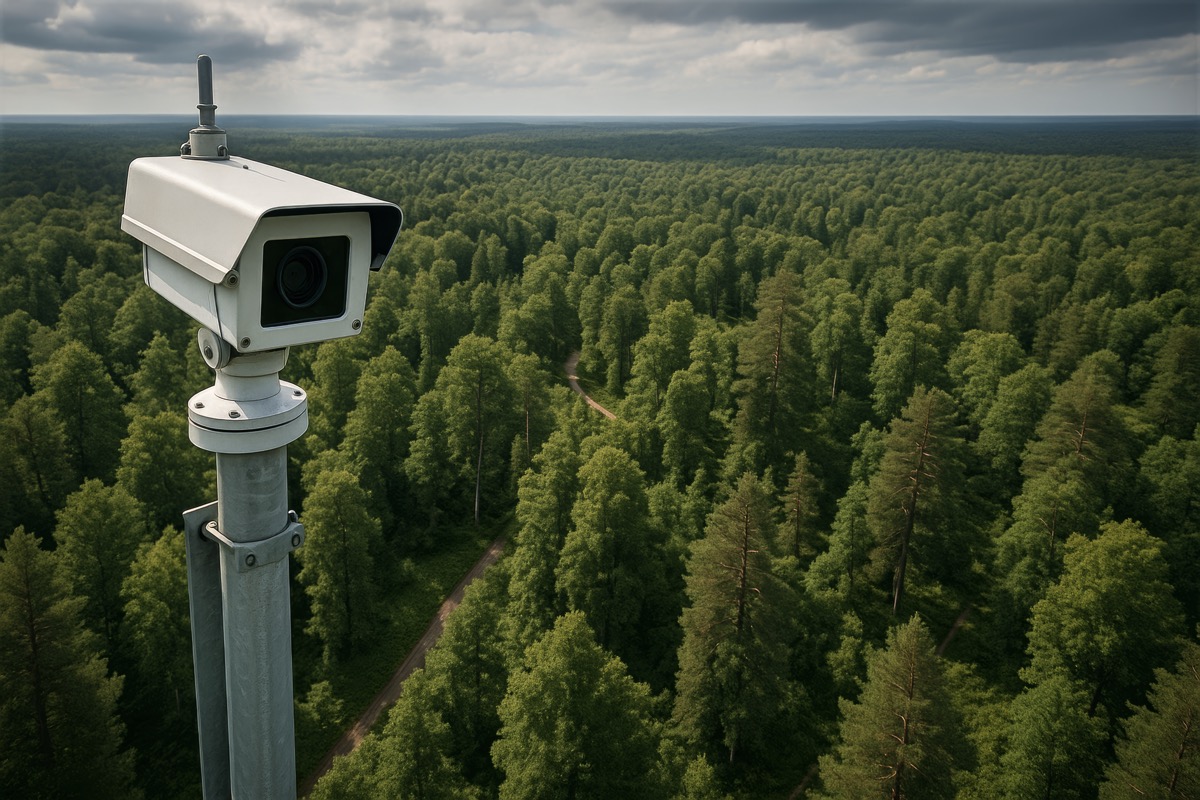Fighting Fire with Algorithms: Fontainebleau’s New Watchtowers
In the forests outside Paris the old watchtowers once stood like sentinels. Each dry season, staff from the National Forestry Office and local volunteers climbed the ladders, scanned the horizon, and tried to catch a thin column of smoke before it grew into a wall of flame. By the early 2000s the platforms had fallen quiet. Smartphones made citizen reports faster, and the labor of manned lookouts slipped away.
The watch has returned in a different form. In 2025, the Forest of Fontainebleau—more than 22,000 hectares of oak and pine—became the test bed for France’s first wildfire detection network driven by artificial intelligence. The system is run by Pyronear, a nonprofit founded in 2020 with a spare mission: catch fires before they catch the forest. This spring the group signed a three-year paid contract with the Seine-et-Marne fire and rescue service, Sdis 77. It is Pyronear’s first paid agreement, a small milestone that signals both growing confidence and the urgency of a warming climate.
How It Works
Four former lookout sites now host the new sentries. Cameras mounted above the canopy pan the landscape every thirty seconds. Each unit is tethered to a microcomputer no larger than a deck of cards. Frame by frame, a model studies the scene for the faintest thread of smoke. If something looks wrong, images and a location ping the fire command center in an instant.
The quiet machinery has already altered the tempo of response. On May 16 the cameras flagged a blaze ten minutes before the first human caller. On June 10 residents reported only a burning smell, yet the system delivered coordinates for the true ignition point. On June 25, just after six in the morning, it picked up flames fifty minutes before the first emergency call. “That is the strength of the system,” says Commander Paul-Édouard Rolland of Sdis 77. “At dawn or late at night, when the forest is empty, the cameras are still awake.”
False Alarms and Fine-Tuning
Like any beginner, the network has stumbled. Low clouds and the dust of harvest sometimes fooled the software into raising the alarm. Engineers now train it on short sequences rather than single frames, teaching it to read the movement of smoke and distinguish it from harmless haze. Each false alert becomes a lesson that sharpens its eye.
Who Pays for the Watch
Money for the pilot is modest and carefully divided. The budget of 164,000 euros is funded mostly by the Ministry of Agriculture and Food Sovereignty, which covers eighty percent under the national wildfire defense program. The rest comes from the local fire service. Pyronear hopes to bring corporate sponsors into the fold, the kind of partnership that lets a brand attach its name to practical climate resilience rather than slogans.
Old Allies, New Tools
The forest managers see an ally rather than a substitute. “The earlier we detect, the faster we can respond,” says Sophie David of the ONF’s eastern Île-de-France office. She reminds visitors that technology does not save the woods on its own. Fires here often smolder underground in peat-rich layers and show smoke only later. Anyone who sees or smells trouble should still call 112 or 18.
The Fire Rules of a Warming World
The rules on the ground have tightened as summers grow hotter and drought returns more often. Fontainebleau now bans smoking, limits camping to three designated areas, and forbids overnight parking in forest lots. Fines can reach four hundred euros. What once felt like the loose freedom of a summer day is now part of a common discipline.
Even with the stricter code there is a faint sense of optimism in these digital towers. They carry forward an old instinct to keep watch and extend it with silicon and code. If the model holds in Fontainebleau it may spread to other forests in France and beyond. Fire seasons are arriving earlier and running longer. The work now is to notice faster, move sooner, and give the woods a chance to breathe.

